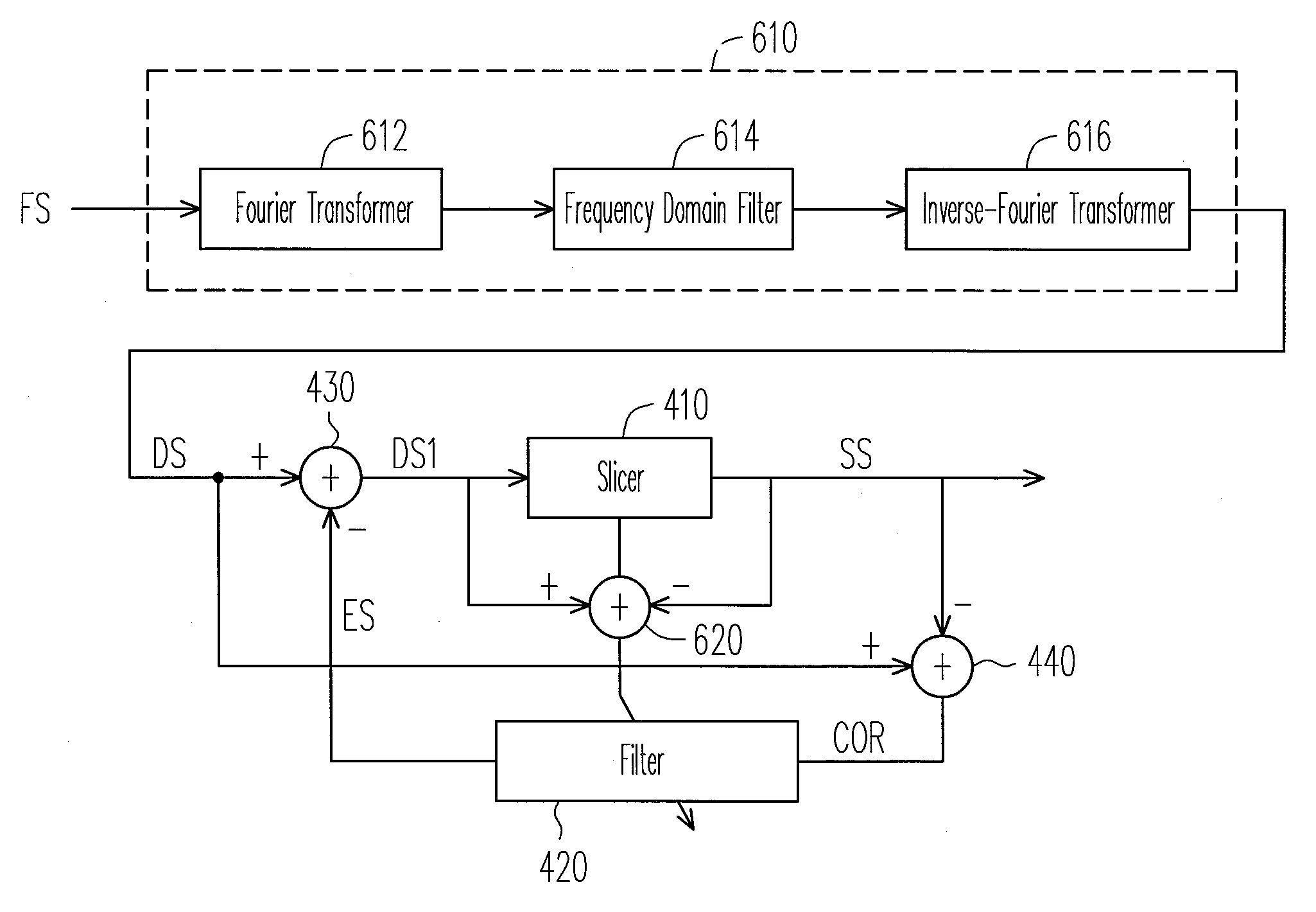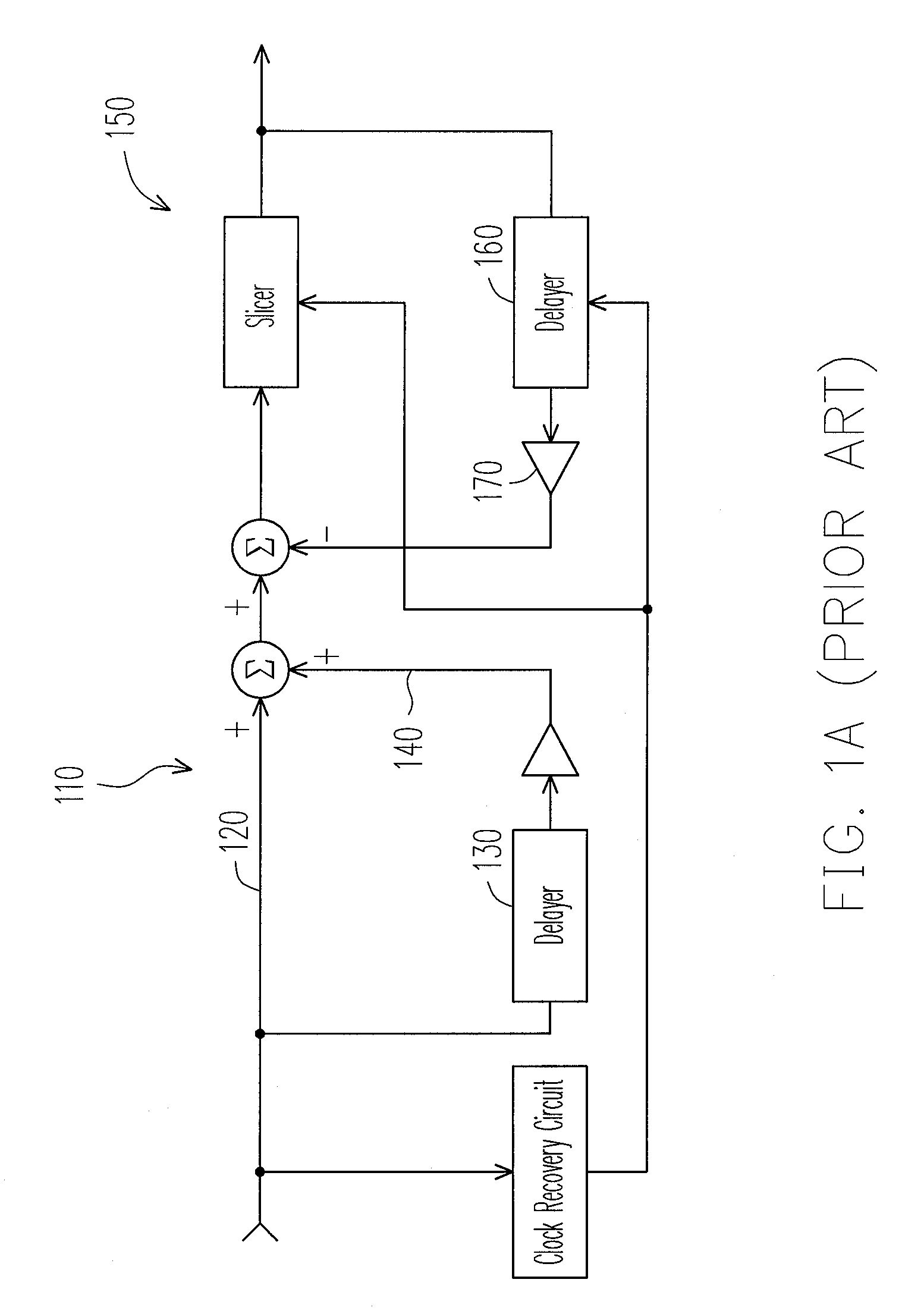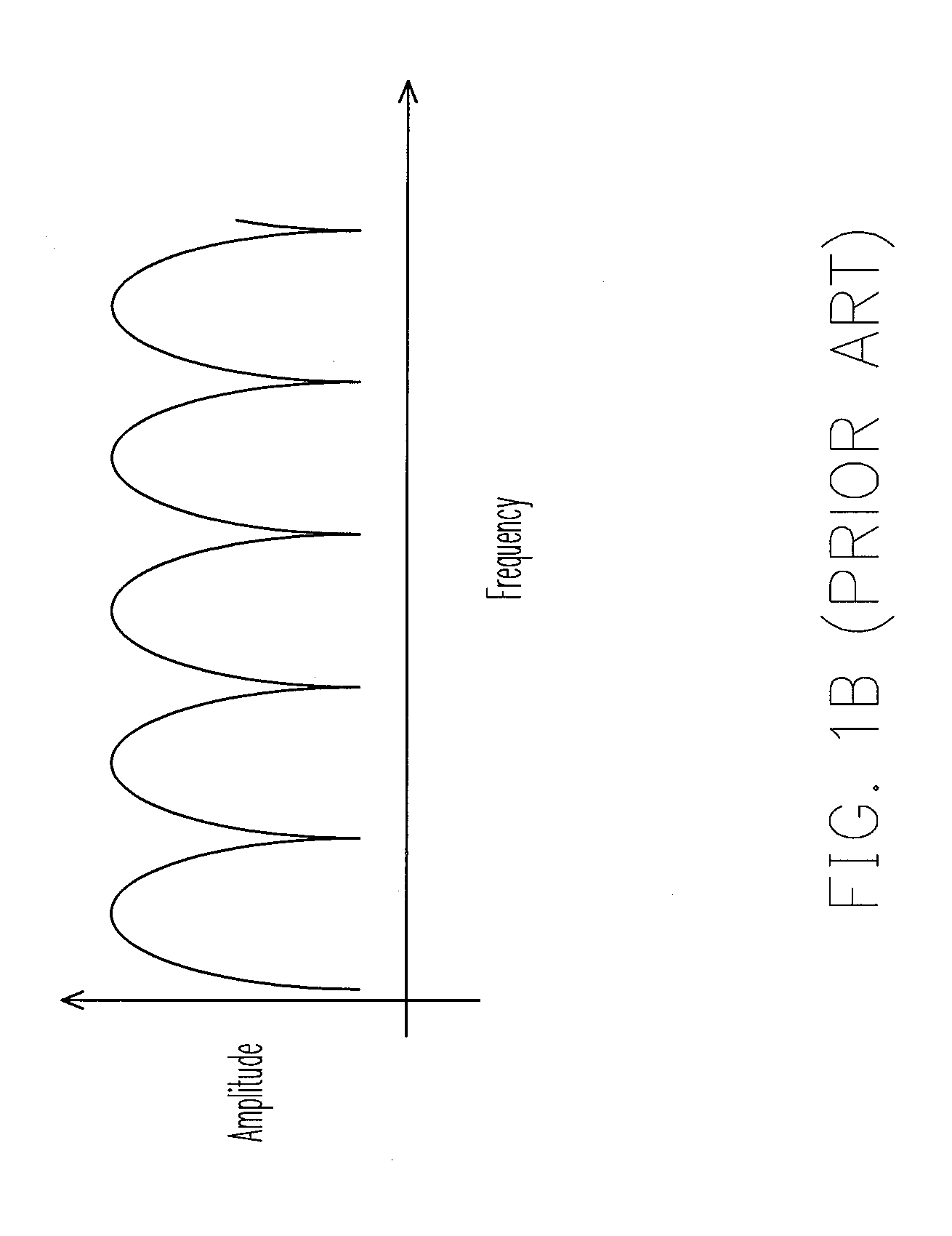Signal processing circuit and signal processing method for removing co-channel interference
a signal processing circuit and cochannel interference technology, applied in the field of digital signal processing circuits, can solve the problems of undesired inter-symbol interference, impaired performance of ghosh'951 patent, and difficulty for analog tv users to change digital tv sets or buy digital stbs
- Summary
- Abstract
- Description
- Claims
- Application Information
AI Technical Summary
Benefits of technology
Problems solved by technology
Method used
Image
Examples
first embodiment
[0037]After being received by an antenna, a digital television signal will be converted to an intermediate frequency band signal by a tuner. Then, a co-channel interference and other noises, e.g., additive white Gaussian noise (AWGN), are then filtered from the signal. And finally, the signal is decoded and outputted to a display for displaying.
[0038]In the current embodiment, a signal processing circuit for removing a co-channel interference from a digital signal is to be illustrated. FIG. 4 is depicts a signal processing circuit according to a first embodiment of the present invention. Referring to FIG. 4, a signal processing circuit 400 includes a slicer 410, a filter 420, a first arithmetic unit 430, and a second arithmetic unit 440. The slicer 410 is coupled between the first arithmetic unit 430 and the second arithmetic unit 440. The filter 420 is also coupled between the first arithmetic unit 430 and the second arithmetic unit 440, and is further coupled to an input terminal ...
second embodiment
[0055]The signal processing circuit of the present invention can also be integrated into an equalizer. FIG. 5 is a circuit diagram illustrating an integration of a signal processing unit and an equalizer according to a second embodiment of the present invention. Referring to FIG. 5, FIG. 5 differs from FIG. 4 in that it further includes a forward filter 510, a third arithmetic unit 520, and a feedback filter 530. The forward filter 510 receives a forestage signal FS outputted from a forestage circuit. The forward filter 510 filters the received forestage signal FS, and outputs a first forestage signal FS1 to the third arithmetic unit 520. The feedback filter 530 receives the symbol signal SS outputted from the slicer 410. After filtering the received symbol signal SS, the feedback filter 530 then outputs an inversed echo signal ECHO to the third arithmetic unit 520. The forestage signal FS contains the echo signal, and can be represented as:
FS=ak+ik+nk+ek,
[0056]in which ak represent...
third embodiment
[0060]The equalizer of the second embodiment (the forward filter 510 and the feedback filter 530) can also be realized by other configurations, such as a blind equalizer. Further, when the echo is very small, the equalizer can even be turned off. As such, it is not a must of the present invention to employ such an equalizer. The equalizer can also be designed as an independent part for application. Further, a frequency domain equalizer can be used for replacing the equalizer used in the second embodiment. FIG. 6 is a circuit diagram illustrating an integration of a signal processing unit and a frequency domain equalizer according to a third embodiment of the present invention.
[0061]Referring to FIG. 6, FIG. 6 differs from FIG. 5 in that a frequency domain equalizer 610 and the filter 420 adjusts the tap coefficients according to a difference between the first digital signal DS1 and the symbol signal SS (i.e., DS1−SS). In the current embodiment, the frequency domain equalizer 610 is ...
PUM
 Login to View More
Login to View More Abstract
Description
Claims
Application Information
 Login to View More
Login to View More - R&D
- Intellectual Property
- Life Sciences
- Materials
- Tech Scout
- Unparalleled Data Quality
- Higher Quality Content
- 60% Fewer Hallucinations
Browse by: Latest US Patents, China's latest patents, Technical Efficacy Thesaurus, Application Domain, Technology Topic, Popular Technical Reports.
© 2025 PatSnap. All rights reserved.Legal|Privacy policy|Modern Slavery Act Transparency Statement|Sitemap|About US| Contact US: help@patsnap.com



